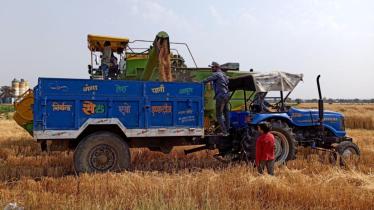The Centre’s production-linked incentive (PLI) scheme for automobile and auto components has seen investments of Rs 14,043 crore till March 2024, or 20% of the Rs 67,690 crore committed by the companies, the Economic Survey 2023-24 released on Monday showed.
After the final date of receiving applications in early January 2022, the government at that time had announced that the scheme “had been successful in attracting proposed investment of `74,850 crore”, against its own target estimate of investment of Rs 42,500 crore over a period of five years.
The PLI scheme for the sector has a budgetary outlay of Rs 25,938 crore from FY23 to FY27. Sub-divided into champion OEM (original equipment manufacturer) incentive scheme and component champion incentive scheme, 85 applicants have received approval under the programme. These will be disbursed as subsidies to companies starting FY25.
Mahindra & Mahindra, Hero MotoCorp, Tata Motors, Ola Electric, TVS Motor, Bajaj Auto, and Hyundai are some of the 18 OEM applicants to have received the scheme’s approval. Some of these companies received the nod in as early as 2022.
Delphi-TVS, Sona BLW, Bharat Forge, Ceat, and Bosch are some of the 64 auto component makers to have received the PLI scheme nod, as per data uploaded on the scheme’s portal.
“Applicants have proposed employment generation of 148,000, against which 28,884 jobs have been generated till FY24 end,” the survey said.
While the PLI scheme supports even non-electric vehicle segments of the automotive industry, the government launched support schemes for battery storage for manufacturers and incentive schemes for the consumers.
The National Programme on Advanced Chemistry Cell (ACC) battery storage was approved in May 2021 with a budgetary outlay of Rs 18,100 crore. It envisages setting up of a cumulative ACC manufacturing capacity of 50 GWh for ACCs and a cumulative capacity of 5 GWh for Niche ACC Technologies.
The first round of the ACC PLI bidding concluded in March 2022, whereby a capacity of 30 GWh was allocated.
“The government released a request for proposal on January 24, 2024, for a total manufacturing capacity of 10 GWh. Bids were received for a cumulative capacity of 70 GWh,” the survey added.
